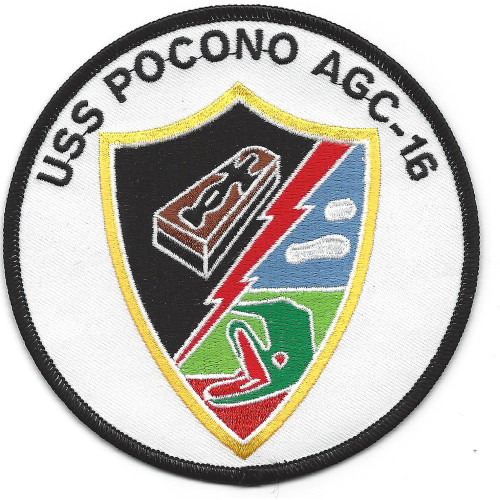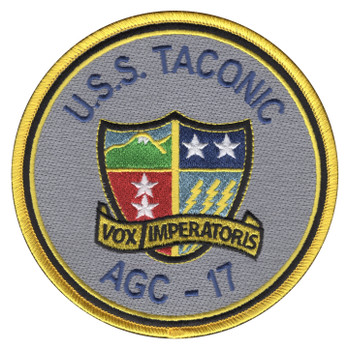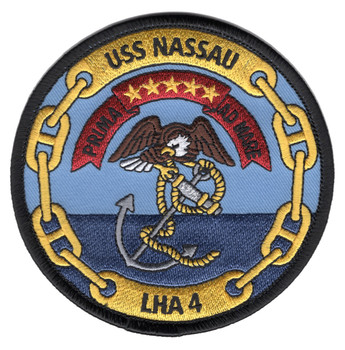Description
USS Pocono AGC 16 Amphibious Force Command Ship Patch (U.S. Navy) 4.5" x 4.5" Embroidered Patch with Sew-On Backing
Superior Materials: Made with premium polyester thread and durable twill fabric, ensuring long-lasting color and strength.
Advanced Embroidery Technology: Crafted using the most advanced embroidery machinery, guaranteeing intricate detail, sharp lines, and consistent quality every time.
Easy Iron-On Application: Features a heat-activated adhesive backing for quick, no-sew attachment. Simply position, iron, and press for a secure bond.
Versatile Use: Perfect for personalizing jackets, backpacks, uniforms, or any fabric surface that needs a touch of personality.
Durable and Washable: Designed to withstand everyday wear and occasional washing without fading or fraying.
Formations & Origins
USS Pocono (AGC-16) was an amphibious force command ship commissioned by the United States Navy during World War II, specifically designed to serve as a floating command post for amphibious operations. Launched in 1944, the ship was built to provide advanced communications, control, and coordination for large-scale amphibious assaults, ensuring smooth integration between naval, ground, and air forces during complex landings. USS Pocono was part of the Navy’s effort to modernize command and control capabilities in response to the increasing complexity of amphibious warfare.
Notable Commanders
The ship’s commanders were typically senior naval officers experienced in amphibious operations and joint force coordination. These leaders had to manage the intricacies of directing multi-branch forces from the sea, balancing communications, logistics, and tactical command in fast-moving and high-pressure environments. Their leadership was crucial for the success of amphibious campaigns, as they oversaw the synchronization of naval gunfire, troop landings, and air support.
Major Campaigns/Operations
USS Pocono played an essential role in the final stages of World War II and into the postwar period. The ship served as a command center during amphibious exercises and was active in the Pacific Theater, where amphibious assaults were critical to island-hopping campaigns against Japan. After the war, USS Pocono continued to support fleet operations, training exercises, and contingency missions during the early Cold War years, often serving as a flagship for amphibious task forces.
Specialized Role/Equipment
As an amphibious force command ship, USS Pocono was equipped with extensive communications gear, radar systems, and command facilities that allowed for real-time coordination of naval, air, and ground forces during amphibious landings. The ship featured advanced radio and telephone communications, plotting rooms, and command centers staffed by joint operations personnel. This technology made Pocono a nerve center for complex operational planning and execution.
Acts of Heroism
While USS Pocono itself was not a frontline combatant, the officers and crew aboard demonstrated professionalism and dedication under intense operational demands. Their work in managing large-scale amphibious operations directly contributed to the success and safety of assault forces. The ship’s crew often operated under threat of enemy air or naval attack, maintaining communications and command functions despite the risks, exemplifying a form of heroism grounded in steadfast service.
Legacy & Notable Achievements
USS Pocono AGC-16 set a standard for command and control in amphibious warfare, influencing the design and operation of future command ships. Its role in enhancing joint force coordination contributed significantly to the effectiveness of amphibious operations during and after World War II. The ship’s legacy lives on in the evolution of naval command ships, and it remains a symbol of the vital behind-the-scenes efforts that enable successful complex military operations.







